#Mark Yoshikawa
Explore tagged Tumblr posts
Text




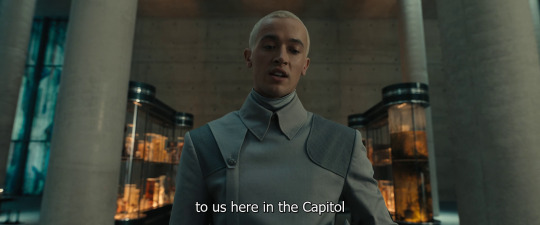



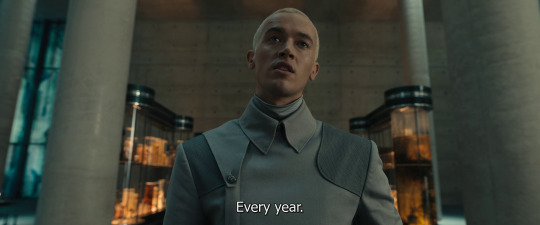
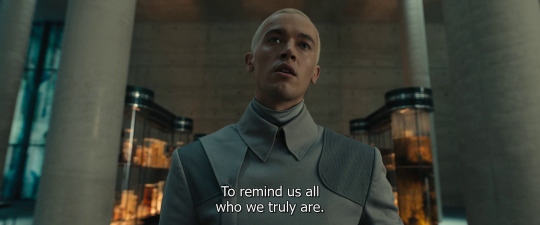

The Hunger Games: The Ballad of Songbirds & Snakes (Francis Lawrence, 2023).
#The Hunger Games: The Ballad of Songbirds & Snakes#the hunger games#the ballad of songbirds and snakes#francis lawrence#viola davis#tom blyth#jo willems#mark yoshikawa#uli hanisch#trish summerville
15 notes
·
View notes
Text
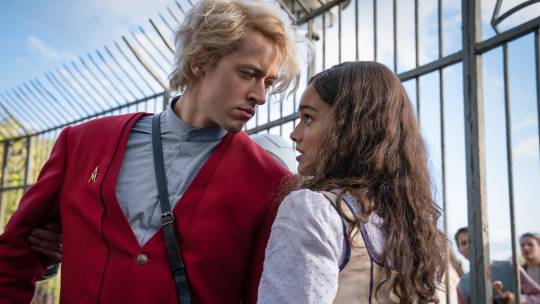
. Nothing you can take from me was ever worth keeping.
The Hunger Games: The Ballad of Songbirds & Snakes, Francis Lawrence (2023)
#Francis Lawrence#Michael Lesslie#Michael Arndt#Tom Blyth#Rachel Zegler#Hunter Schafer#Ashley Liao#Joshua Kantara#Aamer Husain#Josh Andrés Rivera#Viola Davis#Peter Dinklage#Jerome Lance#Mackenzie Lansing#Cooper Dillon#Sofia Sanchez#Jo Willems#James Newton Howard#Mark Yoshikawa#2023
4 notes
·
View notes
Text
Perhaps it was seeing it on a premium large format screen, perhaps it was my mood that day, or perhaps it is because I'm always drawn to the stories of people trapped inside of their contradictions — but I was impressed with "The Ballad of Songbirds and Snakes" last year, especially with its cinematography and editing. I thought bits of the film, particularly the climax, had shots/rhythm evocative of the great Terrence Malick only to find the film's editor Mark Yoshikawa is a frequent collaborator of Malick.
Now I could talk at length about those comparisons, or the sense of gaze of the film (Tom Blyth's eyes are fascinating to track when he's in close-up/medium shot), or the relationship the wider series has with the medium of television. But I'd rather talk about the beginning of one scene near the beginning of the third-act as an example of effective pacing building dramatic tension and establishing character.

Start on this wide shot at a low-angle. "The Ballad of Songbirds and Snakes" uses low-angle shots frequently, which makes sense in a story about insecurity about power/class gaps. Low or high angles means we see something at an unnatural eye-line — which creates a visual power imbalance.
In the background we have a man just barely peaking over the horizon. This is Coriolanus Snow, our boy from the Capitol who comes from a noble family that lost everything in the war. In the first chunks of the film, we learn that Snow wants to restore his family's former glory. He wants to get that power back. The power gap that we see.
But this isn't the Capitol. This is District 12. This is place he was sent because of his failure. He cheated at the titular Hunger Games to win them for his tribute. So what could he be looking for out here to help him with his desire?
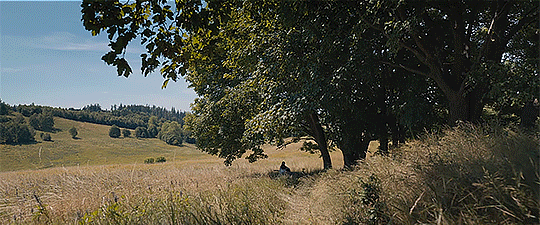
POV shot now. Cutting from that low-angle wide to seeing through Snow's eyes. While it isn't the subject of this post, the POV shot is the most direct expression of gaze. Think about cinema's greatest voyeurist Alfred Hitchcock and all his iconic POV shots ("Vertigo"). Nothing gets inside of a character's head like literally showing what they see.
Snow moves toward something — a something we now know was the (relative) perspective of the first shot.
Or, rather, not a something. But a someone:
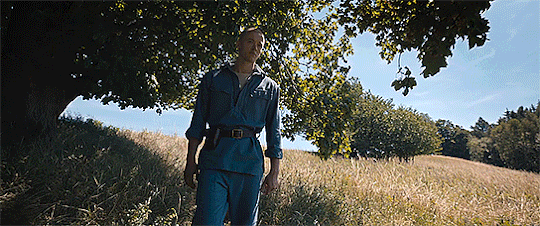
Now back on Snow. Only this time he isn't obscured in the background but near the center of the frame. The camera pushing in before to emulate his movement seen now in his movement. Going toward the someone seen in the previous shot. Someone we couldn't really see before — but now are getting closer to finding.

Close enough to see her guitar.
Of course, if we were listening we would already know that this is Lucy Gray Baird. For her voice echoes through the forest and calls to Snow. But we're sticking to the visual — where we see him pushing toward someone. Pushing toward her.
Baird was his tribute in the Hunger Games. Living (but not hailing from) District 12, she had the lowest odds to win the Games. But through her own determination and a little bit of a push from Snow, she succeeded in winning the Games.
More importantly — she succeeded in winning his heart, as he did to her.
Go back to earlier: the beginning of "The Ballad of Songbirds and Snakes" establishes Snow's desire as reclaiming his family's lost power. Story is conflict, conflict is character, and character is desire. Think mathematically for a moment: Character is action that is a function of desire. But desire cannot remain static. Pull any book or movie off of a shelf at a library. What a character wants at a start will not be the same thing/only thing they want at the end.
Snow began wanting to reclaim his family's lost power. But through this desire — him cheating the games and getting exiled to District 12, the lowest and poorest district in all the land, runs contrary to this desire. He cannot get more power being among the powerless. Why would he act in such a contradictory manner?
Because once he laid his eyes on Lucy Gray, young Coryo had a new desire in his heart. He didn't want to just reclaim what belonged to him, but he also wanted to protect her.
Like all functional drama, this creates a problem — he wants two things that are mutually exclusive. To protect her requires working against the Capitol which means pushing his family further down the social ladder. But to work on restoring his family means throwing her to the odds, and he can't stand thinking of her brown eyes dying out there.
Speaking of brown eyes...

Now we're on Lucy Gray's face. Focus on her and her playing (notice her eyes looking down and not hyperaware of her surroundings), but with another element in the background. Snow coming on the horizon.
Adapting a work from one medium to another always creates new restraints, but also new modes of expression. Condensing a 450-page novel into a ~2.5 hour film requires conveying the emotional arguments of the work in different ways. As such, "The Ballad of Songbirds and Snakes" focuses more on Snow's desires/contradictions than Baird's (even more than the novel) but we still have to some sense of her internal desire to create a compelling character that isn't just an object for Snow's character journey.
Of course, there is the real basic desire of surviving the Games, but that is lackluster and doesn't create real emotional bite. No, her central desire (at least in the film) comes through that one point mentioned earlier — she lived in District 12, but she did not come from District 12. Baird is a wanderer, or at least before the war was part of a wandering culture. Now she is trapped. Her desire is to get back what she lost; she wants to fly as a bird once again.
Look at the above shot. There is no distress on her face. While Snow got exiled for his actions in the prior chunk of the film, Baird got no punishment. She went back to District 12 and could play her music again. Not free to fly high but freer than she was at the start when she got called to fight in the Games.
This natural landscape Baird and Snow find themselves in during this scene is (metaphorical) paradise. It is the closest place to Baird's desire of freedom. The latter bits of the film's third-act use this idea to great dramatic effect.
Baird and Snow's desires both overlap and conflict. Both want to get something that they lost from the war — Snow his status, and Baird her freedom. But their desires operate in opposite direction. Baird wants to go up (free) while Snow is concerned with what's happening down on the ground among the social community. What Snow wants at the start can only be found in having people beneath him, while Baird's is found in having some space to be in.
But recall — Snow also wants to protect her, and this desire comes through a genuine feeling toward her. At the start it may be boyish attraction to her brown eyes and voice, but what his gaze perceived turned into something more. They both want the same thing of undoing loss.

And it's that sameness that pulls Coryo to Lucy Gray. That sameness that pulls him down the social ladder (he has a famous last name, she has no name) and down the society's hierarchy (he is Capitol, she is District) to risk his future for her. That sameness that pulls him to throw his own life and his chance of getting his past back away. That sameness that keeps him walking.
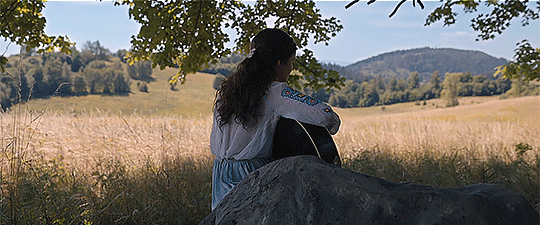
That sameness that makes her bring this strange man into her world. That sameness that makes her trust him with her everything.
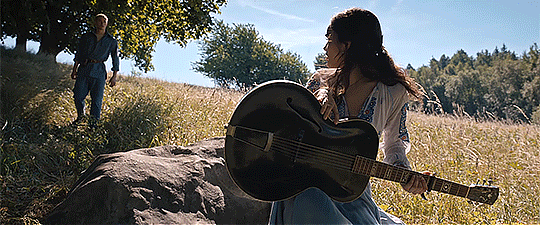
Her personal space out here, far from the suffering in District 12 and the tyrannical bloodshed in the Capitol, now has the presence of that strange man she let inside.
Viewing this natural space as her paradise, she had won this peace but found that her ghost still lingers. A ghost that she doesn't really want to let go of — as evident by her attention going to him, and the unconscious act of her voice calling him here. Remember: nothing in conventional narrative is coincidence or happens spontaneously. Every action a character does is an expression of desire.
Why does she sing? Becuase that's her life. She is a performer. She performed on stage in District 12's bars. She performed when got selected for the Games, which is what first caught Coryo's eyes. She performed for the whole nation to survive in the games. And she performs for Coryo — because she wants to perform for him.
And through this her desire reveals its contradiction. She wants to be free and untethered; to fly like a bird. But she has the same feeling for him that he has for her, and this feeling creates an attachment — a tether. The wanderer found a home.

She could tell him to go away. She could tell him to leave. She could tell him to do whatever. Her words don't matter.
Film is a language of image. Sound (music and dialogue) matter, but ultimately is it a moving picture. A film establishes a character through visual actions. Lucy Gray identifies Coryo, and she stops playing so she can talk to him. So she can go to him. He is pulled into her world — but she is pulled toward him.
Think about the sequence of shots, specifically the POV shots. It is basic movement: start far from the object, and move toward the object. As the character whose POV the camera emulates gets closer to the object, the film cuts back to the opposite side to establish the geography of the scene. But it also creates a little bit of tension — these two forces are coming together and one of them doesn't know it, so what will be the reaction when they come together?
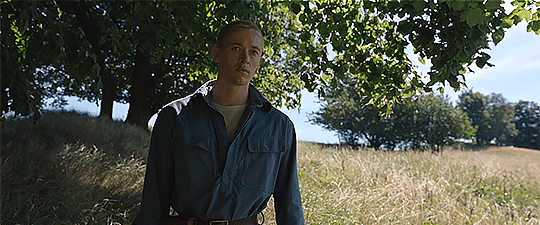
A few frames of static. Coryo stands in anticipation. Waiting to see what she will do.
Go back through these ten shots. Notice they all are of the same vantage point. We see Snow approaching from the horizon, and we see Baird playing her guitar on a rock with Snow coming behind her. While the scene progresses by composing more of the frame around the subject as they get closer together, the core angle remains the same: one shot from him walking and one shot of her point in space. We don't change this basic idea.

Until the scene begins with them coming together to have their first conversation since the Games — which also ends the scene as it shows the distance that remains between them.
They are pulled together, except Coryo stands above her. They both want to be together but they both occupy different places in the social hierarchy that they can never escape. The contradictions of their desires expressed in the blocking of one shot.
#the ballad of songbirds and snakes#snowbaird#tbosas#coriolanus snow#lucy gray baird#film theory#character theory#film analysis#tom blyth#rachel zegler#gifs#didn't revise this at all so i bet there are typos a plenty#it is late#too late
146 notes
·
View notes
Text
Mark Harmon said goodbye to the CBS hit NCIS almost two years ago — but don’t look for him on the golf course.
“I left the show, I didn’t retire,” Harmon tells PEOPLE in this week’s issue.
Instead, the father of two adult sons with his wife, actress Pam Dawber, pivoted from 19 seasons as Special Agent Leroy Jethro Gibbs to a new passion project that had him sifting through piles of research about World War II.
Next month, the 72-year-old will release his first historical nonfiction book, Ghosts of Honolulu: A Japanese Spy, a Japanese American Spy Hunter, and the Untold Story of Pearl Harbor. “I've always thought you can learn from history,” he tells PEOPLE. “Things tend to repeat themselves.”
Ghosts of Honolulu unearths the true story of Douglas Wada, a Japanese American born in Hawaii who became a spy for the U.S. Navy, in his greenest years posing as a local newspaper reporter for what was then known as the Office of Naval Intelligence (ONI). Ultimately, Wada would chase rival Japanese spy Takeo Yoshikawa across the Pacific following the coordinated attack on Pearl Harbor.
"This is the first story (leading) to the birth of what became (the real) NCIS,” says Harmon of the Naval Criminal Investigative Service. "These agents are really a different breed. I hope that there’s a story revealed here that you don’t know. It was important work they were doing, and no one knew about it.”
Harmon calls Wada a trailblazer: "He was a very specific guy in a very specific time" with a skill set to match, working to uncover Japanese infiltration while striving to protect the innocent Japanese American community being targeted by his own government.
The book is a labor of love from Harmon and co-writer Leon Carroll Jr., the latter who spent 20 years as a real NCIS special agent before becoming the CBS show's longtime technical advisor.
While in the agency, Carroll Jr. "was their No. 1 interrogator," says Harmon. "I was always asking him about the right way to do something or the way he would do something. There wasn't any interrogation I ever was part of on this show that I didn't talk to him about. So when this idea came to me, I wanted it to be real. I said I wouldn't touch this without him."
Harmon's broadcaster father fought as a pilot in WWII, and in his youth Harmon had three years of ROTC training in high school before going on to play quarterback for UCLA. But he says it was his casting as Gibbs that led to his current passion for naval spy history.
“I was trying to research it, and there was just not much information about this agency," he says. "It was really asking questions and meeting people and then grew from that.”
Now, after spending almost two decades on NCIS, Harmon says he is using his free time to explore new pursuits. “I always find things to do," he says. "I think for the longest time I was just tired, to be honest. My workload was heavy every week. I took it seriously, and there were a lot of people there who did the same. I miss the camaraderie, the lunches at the tables and hearing about people’s families and what they’re doing away from the show. But it’s a job.”
At this stage in his life, Harmon continues to feel lucky. “I've got time to do whatever I want to. I can plan a dinner with the boys, we can take a trip. I'm so fortunate, I don't ever wake up not thinking that."
Ghosts of Honolulu: A Japanese Spy, a Japanese American Spy Hunter, and the Untold Story of Pearl Harbor is out Nov. 14 wherever books are sold.
5 notes
·
View notes
Text
An incomplete and constantly-updating list of things I like
Long post. Goes under read more.
Things in bold are favs. Italicized text is to avoid confusion with commas. Links are included to things I think would be hard to find. Most of these things can be searched for on my blogs.
Aesthetics
Y2K, Vectorheart/Metalheart, McBling, Gadgetpunk, Poolrooms, Retro CGI, Memphis design, Brutalism, 70s architecture, deep blue shades of purple, 80s anime, Retrofuture
TV, Anime, and Manga
Dragon Ball Z, Chainsaw Man, Death Note, Bojack Horseman, Castlevania, Astroblast, Fate/stay night: Unlimited Blade Works, Naruto, Jojo's Bizarre Adventure, Garden of Sinners, Death Parade, Serial Experiments Lain, Mobile Suit Gundam
Music
Hey I made a document for the sole purpose of sharing music
FRIENDZONE, game OSTs in general, Flying Lotus, Chlorine Mist, Toro Y Moi, Sweet Trip, LTJ Bukem, The Sleepwalk, Date of Birth, Yuji Ohno, Tim Follin, John Coltrane, 2 Mello, Hideki Naganuma, Kinoko Teikoku, RED ORCA, Awlnight, AKTR, Zoomo, Dyelo Think, Beautiful Disco, Toby Fox, Masafumi Takada, Demensa, Jaspre, Disctr4k, Justin.FM, MACHINE GIRL, Yoshino Yoshikawa, wun two, Curren$y, Daft Punk, Voyager, Death Grips, Hiroshi Sato, Family Event, Emune, Zuper, Thundercat, DJ Sun, J Dilla, Nujabes, Hail the Sun, Osamu Sato, Rukunetsu, Richard Jacques, Klaus Veen, Prodigy, cxldr3, Yasuyuki Suzuki, Alec Holowka, J Cole, SkyBlew, The Alchemist, LE$, K.H.D.N. (Ko Hayashi & Daisuke Nagata), Katsumi Tanaka, Masayoshi Takanaka, Sciman101, Kamome Sano, Nobuyoshi Sano, Akitaka Tohyama, Yuji Takenouchi, Fantastic Plastic Machine, Trashii, MNDSGN
Video games
Jet Set Radio, Phantasy Star Universe, Phantasy Star Online 2 (Base), Bomb Rush Cyberfunk, Persona 3, Fate/stay night, Pokemon Platinum, Pokemon Emerald, Fate/Grand Order, Team Fortress 2, Halo, Splatoon, Super Smash Bros., Animal Crossing, Lethal League, Fortnite, Counter-Strike, Final Fantasy 6, Castle Crashers, Battleblock Theater, Alien Hominid, Metal Slug, Eastern Mind: The Lost Souls of Tong-nou, Chu-teng, Garou: Mark of the Wolves, Under Night In-Birth, Perfect Dark Zero, Banjo-Kazooie, Undertale/Deltarune, No More Heroes, killer7, Resident Evil 4, Sonic & SEGA All-Stars Racing Transformed, Akatsuki Blitzkampf, BlazBlue, OFF, Yume Nikki, Zero Divide, Bust a Groove, Cosmo Fighters, Kaze no NOTAM, No One Can Stop Mr. Domino!, Zanac X Zanac, Half Life, Bugsnax, Portal, Pictionary on NES (for its music alone), Treasure Master, Data East's Street Hoop, Tony Hawk's games, Bayonetta, Xenoblade Chronicles, Melty Blood, Killer is Dead, Life Tastes Like Cardboard, Night in the Woods, Tekken, Shenmue, MapleStory, Drill Dozer, Kirby & the Amazing Mirror, Risk of Rain, DEADBOLT, Sonic Mania, Spy Fox, Mad Tracks, Kero Blaster, Cave Story, Titanfall 2, Grand Theft Auto: San Andreas, Hatoful Boyfriend, Just, Bearly, Bloons TD, Milk inside a bag of milk inside a bag of milk, Devil May Cry, Marvel Vs. Capcom, Yakuza/Like a Dragon, Dust: an Elysian Tail, LittleBigPlanet, PlayStation All-Stars Battle Royale, PaRappa the Rapper, Um Jammer Lammy, Left 4 Dead, Quake, Frog Detective, Art of Balance, Wii Sports, New Super Mario Bros. (2006), Outrun, Ridge Racer, Gran Turismo, Combat Tournament, Mr. Gimmick, Jimmy & the Pulsating Mass, Yume Nikki, VALORANT, Bomberman, Mega Man
#thirteen.txt#I apologize in advance for anyone who sees this post randomly when searching for any of the mentioned things
3 notes
·
View notes
Text

Knight of Cups (Terrence Malick, 2015)
Cast: Christian Bale, Cate Blanchett, Natalie Portman, Brian Dennehy, Antonio Banderas, Frieda Pinto, Wes Bentley, Isabel Lucas, Teresa Palmer, Imogen Poots, Ben Kingsley (voice). Screenplay: Terrence Malick. Cinematography: Emmanuel Lubezki. Production design: Jack Fisk. Film editing: A.J. Edwards, Keith Fraase, Geoffrey Richman, Mark Yoshikawa. Music: Hanan Townshend.
Two films kept coming to mind as I watched Terrence Malick's Knight of Cups: Federico Fellini's La Dolce Vita (1960) and Andrei Tarkovsky's Mirror (1975). Fellini's film because the journey of Malick's protagonist, Rick (Christian Bale), through the decadence of Hollywood and Las Vegas echoes that of Marcello's (Marcello Mastroianni) explorations of Rome. Tarkovsky's because Malick's exploration of Rick's life exhibits a similar steadfast refusal to adhere to a strict linear narrative. Most of us go to movies to have stories told to us. Our lives are a web of stories, told to us by history and religion and science and society, and most explicitly by art. We tend to prefer the old linear progression of storytelling: beginning, middle, end, or the familiar five-act structure of situation, complication, crisis, struggle, and resolution. But artists tend to get weary of the straightforward approach; they like to mix things up, to find new ways of storytelling. The modernist novelists like Joyce and Woolf and Faulkner eschewed linearity, and filmmakers have tried to take a similar course. They have the advantage of working with images as well as words. So Malick, like Tarkovsky and Fellini and others, experiments with editing and montage to meld images with language and gesture to probe the psychological depths of human character and experience. The problem with experimentation is that experiments fail more often than they succeed. Some think that Knight of Cups is a successful experiment, but most critics and much of the film's audience seem to disagree, to judge from, for example, a 5.6 rating on IMDb. Knight of Cups spent two years in post-production and there are four credited film editors, which suggests that Malick over-reached himself. For me, what was lost in the process of making the film was a clarity of vision. Granted, the lives of human beings are messy, loose-ended things, but what do we depend on artists to do but try to make sense of them. I think Malick lost sight of his protagonist, Rick, in trying to interpret his life and loves through the film's odd amalgamation of John Bunyan's Pilgrim's Progress and the Major Arcana of the tarot pack and then overlaying it with a collage of images provided by Emmanuel Lubezki's camera. We glimpse Rick through filters, grasping for moments that will resolve into something substantial about him, his problems with his family and with women. And for all the casting of fine actors like Bale and Cate Blanchett and Natalie Portman, the production negates their attempts to create characters. In fact, their starriness works against them: Instead of being drawn into the character of Rick or Nancy or Elizabeth, we're removed from them by the familiarity of the actor playing them. I understand what admirers of the film like Matt Zoller Seitz are saying when they proclaim, "The sheer freedom of it is intoxicating if you meet the film on its own level, and accept that it's unfinished, open-ended, by design, because it's at least partly concerned with the impossibility of imposing meaningful order on experience, whether through religion, occult symbolism, mass-produced images and stories, or family lore." But I wonder if that's enough to make an experiment successful. I came away from Knight of Cups knowing nothing more about its characters than I did before I met them.
3 notes
·
View notes
Text
Some activists of XRP Ledger and Ripple communities noticed that Ripple removed the section about on-demand liquidity (ODL), a RippleNet product for seamless and low-cost cross-border remittances. A Ripple Inc. officer sheds light on what has happened to ODL and who can continue using it.Farewell to ODL? Ripple's VP Yoshikawa makes things clearU.S. crypto decacorn Ripple decided to cease using the term ODL as it might be "difficult to understand at first glance for outsiders." As such, a decision was made to "consolidate" ODL services under the term "Ripple Payments." This statement was made by Ripple's Vice President Emi Yoshikawa yesterday, Sept. 15, 2023.はい、ODLは外部の人から見ると一見わかりにくい言葉なのでRipple paymentsという言葉に集約することになりました。(その中に引き続きODLは機能として存在します)— Emi Yoshikawa (@emy_wng) September 15, 2023 Yoshikawa addresses questions of Ripple community members who noticed that the firm deleted mentions of ODL from its official communication channels.Despite such a surprising "rebranding," ODL mechanisms will work as usual, VP Yoshikawa added. She also opined that removing crypto-specific characteristics of services should be considered a "trend" now:This is a trend in the transition from crypto-like jargon to more mainstreamAs covered by U.Today previously, RippleNet's ODL is a cross-border payment solution that leverages the XRP cryptocurrency as a bridge asset. ODL "money corridors" are used by customers and institutions as a secure, fast and low-cost method of cross-border remittances.Latin America and Asia Pacific are two regions crucial for Ripple's ODL strategy. In 2019-2021, ODL was also integrated into the services of MoneyGram, one of the largest global payment systems.Ripple's partners accelerate expansion to new regionsA network of Ripple partners across the globe also use XRP-based ODL for their remittance channels. In 2023, more corridors were opened by SBI, Tranglo and other Ripple counterparties.For some of the partners, using RippleNet's ODL marked the first step of their cryptocurrency journey. For instance, Ripple's long-term strategic partner Novatti Group publicly released its 1:1 fiat-backed stablecoin, AUDD. XRP Ledger was chosen as the technical basis for the new stablecoin project.Australian Digital Dollar by Novatti Group is designed to offer a reliable on-chain stablecoin solution for the Australian market.The XRP price is attempting to stay above the crucial level of $0.5 on major spot exchanges. Source
0 notes
Text
PauseTalk Vol. 86

Oh what a night it was.
Following a hiatus of 8 years (Vol. 85 was held in 2015), PauseTalk was back for "one night only" on May 31, 2023 for Vol. 86. Held at FabCafe in Shibuya, it not only ended up being a warm reunion for many regulars from the original series, but also included quite a few new faces, which made it feel like a proper edition. Along with reminiscing of bygone days, new topics were brought up and discussed, and ideas were shared. And I got to blow out candles on cake that had my face on it (it was my birthday).
Although we didn't have the traditional attendance sheet printed out, everyone (hopefully) did contribute their names, which you'll find listed here:
Adrian Hogan
Benjamin Parks
Brian Scott Peterson
Calvin Chiang
Don Kratzer
Jean Snow
Jenny Yu
Jian Shen
Johnny Linnert
Judit Moreno
Luis Mendo
Mariko Suzuki
Mark Dytham
Matt Schley
Patrick Laffoon
Robert Zetzsche
Said Karlsson
Victoria Ying
Yuko Yoshikawa
I invite you to check out the Facebook photo gallery featuring photos contributed by Benjamin Parks, Brian Scott Peterson, and Don Kratzer.
The amazing sketches of some of the attendees (included in the photo gallery and at the bottom of this post) were drawn on the spot by Luis Mendo throughout the evening.
What about the future of Pausetalk? Although the intention was just to do a one-off event during my visit to Tokyo (my first proper visit since 2015), I would consider this Vol. 86 to be such a success and the reaction was so positive that I do plan on organizing more editions on my next visits, hopefully once or twice a year. Stay tuned for info on the next one by following the PauseTalk page on Facebook or via this very site.

0 notes
Text
very Tsukihi Undo focused, as expected, but it's interesting getting to see visuals from the new season. still clearly sticking with the series' existing visual identity that Oishi and Takeuchi established with Bakemonogatari, but there's a lot of departures in style here, most notably in the backgrounds, that give me an idea of how Midori Yoshikawa will be making her mark on the series. very excited for more!

ooooh
4 notes
·
View notes
Photo










Reminiscence (Lisa Joy, 2021).
#reminiscence#reminiscence (2021)#lisa joy#hugh jackman#rebecca ferguson#paul cameron#mark yoshikawa#howard cummings#matthew gatlin#scott plauche#leonard r. spears#jennifer starzyk
102 notes
·
View notes
Photo

Movie #37 of 2021: Reminiscence
Terrible cinematic genre gibberish.
#reminiscence#lisa joy#english#2021#37#mystery#romance#sci fi#ramin djawadi#paul cameron#mark yoshikawa#thriller#mandarin#spanish#sony cinealta venice#anamorphic#terrible
3 notes
·
View notes
Text
Wondering what NCIS star Mark Harmon has been up to since his character, team leader Leroy Jethro Gibbs, retired on the beloved military crime procedural in 2021? No, the actor hasn’t built a boat — at least, not yet. But he has written this fast-paced real-life espionage tale set in Honolulu during the early days of naval intelligence operations, before it became the Naval Criminal Investigative Service.

(Credit: HARPER COLLINS FOCUS; THEO CAMACHO/HARPER COLLINS FOCUS)
Harmon co-wrote Ghosts of Honolulu the colorful account with the show’s technical adviser, former NCIS special agent Leon Carroll Jr. The book centers on Douglas Wada, the only Japanese-American agent in naval intelligence at the time. As war with Japan looms, the onetime baseball prodigy and son of an immigrant carpenter is employed as a journalist while working undercover. He also translates Japanese consulate wiretaps.
“Doug Wada himself is a Gibbs kind of guy. A man of few words, very meticulous, very insightful of people and how they operated,” Carroll says. Working against Wada is Takeo Yoshikawa. He’s posing as a Japanese consulate worker but is really a spy sent to gather information on the U.S. fleet in Pearl Harbor for top brass like the notorious Admiral Yamamoto.
When the duo began planning out the book, a big question was how to appeal to their NCIS audience. “Mark and I decided it would be a good idea to tell a real story,” Carroll says. They dug into historical documents with a team of researchers to paint vibrant pictures of the two men, whose stories play out against a backdrop of U.S. military intelligence agencies vying for turf, a family of Nazi spies, and growing anti-Japanese sentiment.
One of many moments where you can practically feel Wada’s pulse quicken comes after the surprise Pearl Harbor attack. He is called in to question America’s first World War II POW, a Japanese mini-sub skipper who has washed up on a beach, and Carroll writes the scene with brilliant tension. If you miss Gibbs in the interview room, this book is for you.
0 notes
Photo

If only I could go down that river. To love her in the wild, forget the name of Smith. I should tell her. Tell her what? It was just a dream. I am now awake.
The New World, Terrence Malick (2005)
#Terrence Malick#Colin Farrell#Q'orianka Kilcher#Christopher Plummer#Christian Bale#August Schellenberg#Wes Studi#David Thewlis#Ben Mendelsohn#Noah Taylor#Ben Chaplin#Eddie Marsan#John Savage#Jonathan Pryce#Emmanuel Lubezki#James Horner#Richard Chew#Hank Corwin#Saar Klein#Mark Yoshikawa#2005
23 notes
·
View notes
Photo

Hideo Sugawara, Seiichi Kato, and Tomio Aoki in I Was Born, But.... (Yasujiro Ozu, 1932)
Cast: Tetsuo Saito, Tomio Aoki, Mitsuko Yoshikawa, Hideo Sugawara, Takeshi Sakamoto, Teruyo Hayami, Seiichi Kato. Screenplay: Akira Fujimi, Geibei Ibushima. Cinematography: Hideo Shigehara. Art direction: Takashi Kono. Film editing: Hideo Shigehara.
The family was source and inspiration for many of Ozu's greatest films, but he often focused on the problems caused by the elders in a family, as in Tokyo Story (1953) and The End of Summer (1961). The family is supposedly the basic element in society, but Ozu's films often show how society itself strains familial relationships: Elders who have outgrown their usefulness can become obstacles to a family's ongoing concerns about fitting into and making a way in the larger society. I Was Born, But.... turns things around by focusing on children, whose self-centeredness can be as troublesome to the family dynamic as that of the very old. Ozu's films are about expectations that can never be quite fulfilled, and in no part of life are expectations more important than childhood. That makes the film sound more grimly serious than it is, for on the surface I Was Born looks an awful lot like American-style comic films about kids -- the Our Gang and Little Rascals comedies, for example. It focuses on Ryoichi (Hideo Sugawara) and his younger brother, Keiji (Tomio Aoki), who have just moved to the suburbs with their father, Yoshi (Tatsuo Saito), and mother, Haha (Mitsuko Yoshikawa). The boys are unhappy with the move, partly because the local kids bully them as newcomers, but also because Ryoichi in particular resents Yoshi's expectations that he'll get high marks in school. Eventually, after playing hooky and being scolded, they begin to adjust, and Ozu's picture of boyhood becomes lighter and more amusing. We see them adapting to their new corner of society: They overcome the bullies and make friends with Taro (Seiichi Kato), who just happens to be the son of Yoshi's boss. But then Taro lets them come over to his house on an evening when his father is showing home movies to Yoshi and some other employees, and Ryoichi and Keiji are embarrassed when some of the films show their father making funny faces and clowning for the boss and co-workers. It's an eye-opener for Ryoichi especially, who becomes aware of his father's place in the corporate hierarchy. Back home, he demands to know why his father isn't a corporate executive instead of a middle manager, and Yoshi is hard-pressed to explain this particular fact of life. The boys pitch a tantrum -- Keiji always following his older brother's lead -- and Yoshi spanks Ryoichi, only making matters worse. By the film's end, the boys and their parents have reconciled, but one senses that everyone has learned one of those lessons that only life can teach. I Was Born, But.... is one of Ozu's late silent films, and it's masterly in provoking serious thought about a near-universal experience while being engagingly entertaining. It's also very much of its pre-World War II time. Perhaps only in hindsight do audiences notice the hints of Japanese militarism in the story: the military-style drills that the small boys undergo at school, and the fact that when Yoshi asks his sons what they want to do when they grow up, they want to be generals. The performances of the young actors are extraordinary, as is the cinematography of Hideo Shigehara.
0 notes
Text
Random Things I Associate with the Horimiya Characters
(Click the pictures for better quality).
UPDATED A/N: If you recognize this piece on a different blog under the name @iwritesinsandsins it’s because Tumblr silenced all my posts there so I’m starting over again. (/ˍ・、)

Izumi Miyamura
The deep bitter smell of coffee but actually sweet to taste.
Having nostalgic flashbacks to your childhood.
The routine of watering your plants in the morning.
Gradually adding tattoos and piercings to your body.
Black nail polish.
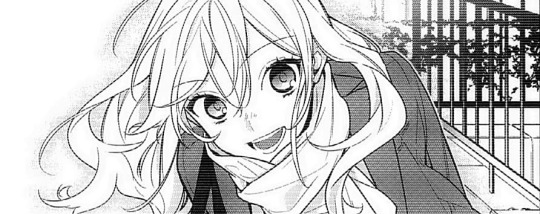
Kyoko Hori
Using a weighted blanket in the winter.
Playing tetherball with friends.
Giving your loved one the better looking portion of food and giving yourself the “bad” one.
The first clean slice from using a freshly sharpened knife.
The water that’s above the rim but doesn’t spill over.

Toru Ishikawa
The thrilling feeling of remembering a vivid dream you had when you wake up.
Being on a sports team.
Love at first sight.
Wearing a perfectly fitting pair of pants.
Hitting that one note in a song you didn’t know you could.

Yuki Yoshikawa
The voice messages inside a Build-a-Bear.
Feeling accomplished after making a phone call.
The crackling of Pop Rocks candy in your mouth.
Binge-watching a whole show in a week or less.
Finally seeing someone after missing them for a while.

Kakeru Sengoku
Books written in a foreign language that you can’t understand.
The rich sounds of music being played on a vinyl record player.
The satisfied feeling of acing a test you studied hard for.
Knowing exactly what you’re going to say when ordering.
The clean fresh look of a new haircut.
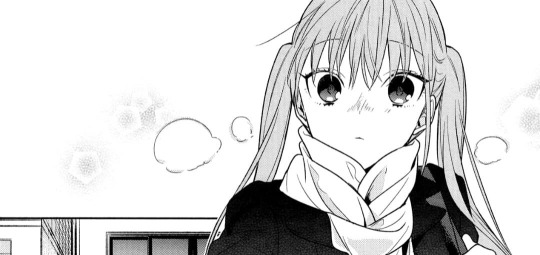
Remi Ayasaki
The fluffiness of cotton candy.
Blowing dandelion seeds and watching them fly in the air.
Wishing you had a Tamagotchi again.
Making friendship bracelets.
Understanding others’ inside jokes while everyone else is confused.
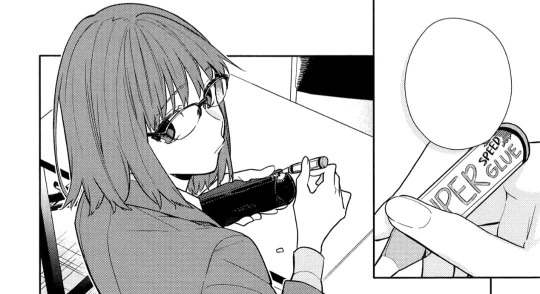
Sakura Kono
Faint chirping of birds in the distance at 04:00.
Laying down on freshly cleaned bedsheets.
Making organized aesthetically pleasing journals.
Tasting freshly grown vegetables from your garden.
The feeling of a new beginning once the snow melts and slowly becomes spring.

Syu Iura
Being able to wearing your friends’ hoodies/sweaters.
Appreciating freckles and beauty marks.
Holographic nail polish.
Discovering a new song and playing it on repeat.
Playing cookie-clicker games.

Akane Yanagi
Quiet stolen glances from across the room with your crush.
Reading handwritten love letters.
Cuticle care.
A cup of freshly brewed tea.
Big sturdy trees that provide homes to animals.
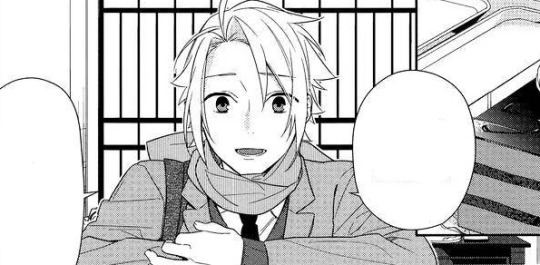
Kouichi Shindo
Purposely wearing mismatching socks.
Screenshotting funny conversations with friends.
Bold colored hair.
Hearing contagious laughter.
Wearing Ring Pops with your significant other.

Makio Tanihara
Seeing the rain pouring down on one side and the other not being rained on at all from a distance.
That cold first dip into the pool.
Drinking cold water after chewing mint gum.
Music that leaks through your headphones.
Beating the boss level in a video game.
#horimiya#izumi miyamura#kyoko hori#toru ishikawa#yuki yoshikawa#kakeru sengoku#remi ayasaki#sakura kono#syu iura#akane yanagi#kouichi shindo#makio tanihara
142 notes
·
View notes